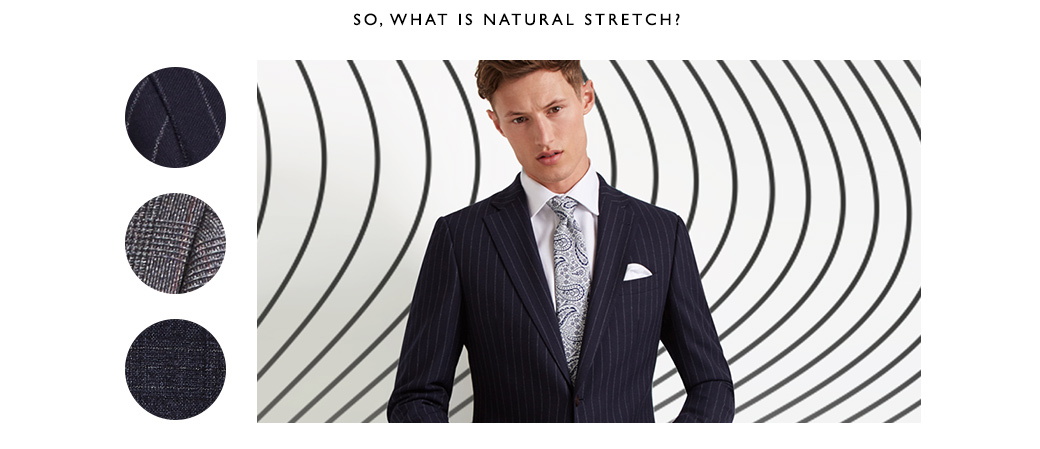The 20-Second Trick For All 4 Way Stretch Fabrics
The 20-Second Trick For All 4 Way Stretch Fabrics
Blog Article
Little Known Questions About All 4 Way Stretch Fabrics.
Table of ContentsThe All 4 Way Stretch Fabrics DiariesThe smart Trick of All 4 Way Stretch Fabrics That Nobody is DiscussingAn Unbiased View of All 4 Way Stretch FabricsNot known Facts About All 4 Way Stretch Fabrics6 Easy Facts About All 4 Way Stretch Fabrics DescribedThe 6-Second Trick For All 4 Way Stretch FabricsGetting My All 4 Way Stretch Fabrics To Work
As I also want UV security from my garments when I go out, I would certainly choose a densely woven cotton material. One even more factor to consider when purchasing the textile is the means it will certainly after washing.A secure bet would be to purchase at least 10% added material. If you can purchase preshrunk material, this is the best.

If you are matching the color, like selecting the lining for the main material or picking material to add as trim, this is especially important. The textile showrooms will normally have a light well where you can see the fabric in sunlight (or a home window with good light from outside).
Getting The All 4 Way Stretch Fabrics To Work

Many fabrics are concerning 44 wide. When you most likely to purchase material, price quote just how much you want first and then most likely to the store. Take a look at this message to know the response to this regularly heard question "Just how much textile do I require". With a fat quarter, you will get an 18 large by 22 long.
Some excellent bargains can be had this means. In dressmaking, we buy textile by the yard/meter.
All 4 Way Stretch Fabrics Fundamentals Explained
In a quarter of a backyard, you obtain a 9 by 44 strip of textile, which has to do with 22 cm in size. It is always much better to acquire larger cloth. According to the size of materials, they may be called single-width and double-width. Solitary size is usually approximately 49 inches in size and double size up to 60.
You can discover more regarding yard to meter conversion here. Take a look at this post on reading a tape procedure Select fabrics that are not as well difficult or rigid, or you would not be comfy in them. Linen, Denim, flannel, For cooler climates, choose woollen (100% along with wool blends) wool tweeds, woollen crepe; it essentially depends on what pants you are speaking about Tailored trousers, Unstructured Pant, Combined, Jeans.
All cotton fabrics are good for youngsters. Knit materials are likewise excellent for youngsters you can go for wool knits.
The Only Guide for All 4 Way Stretch Fabrics
Take a look at this message on the most effective textile for clothing for children and kids for more information on this topic. Lightweight cotton is my favored to sew skirts. Cotton yard cloth in pretty prints is wonderful. Silk jersey is an excellent fabric for stitching skirts, as is Ponte Roma weaved material.
Drapey rayons, soft woollen, lycra blends, and stretch velvets are all appropriate for stitching skirts. Woollen (Wool crepe has a great drape and offers sufficient structure for jackets; woollen tweeds are great as well), Linen & Flannel. Raw silk, satin, taffeta, velvet, Lace, silk chiffon, and Organza are all excellent for making dresses.
You can get medium-weight textiles with some spandex/elastane added for a fitting bodycon-type dress. For drapey gowns, you can choose lightweight fabrics. Crepe, challis, and charmeuse are all drapey fabrics matched for this design.
Lightweight cotton textile, Cambric, Chintz, Twill, Faille, Seersucker, Poplin, lightweight woven broadcloth, batiste, linen, eyelet are great for making tee shirts and blouses. Silky satin textile is excellent for making ventilated tops. When getting patterned textile (most of the formed fabric comes with a width of 45 or 54 inches), there will certainly be pattern repeat in these materials, and this should be taken into consideration when cutting fabric as well as buying them i.e., if you want to match the patterns at the joints.
The Ultimate Guide To All 4 Way Stretch Fabrics
The motifs will be distributed in a scheduled style on the fabric. You may discover often If the print is not put on the fabric appropriately, it can not be matched or lined up when constructed without distorting the material and the hang of the garment.


The fabric weight is dependent on several elements like the weave, fiber kind, etc and is normally denoted by GSM. GSM can vary from 60 -700; 700 being the GSM of extremely high-quality woolen fabric.
One point you have to maintain in mind is that higher material weight does not denote greater textile top quality. You can not pick high material weight material denim for a light-weight floating shawl.
In a nutshell, the most important standards to look for in the material you acquire are as adheres to (https://padlet.com/rayherrera33101/all-4-way-stretch-fabrics-qd1o6grjxgjfwzca). The number of threads per inch of textile (yarns-per-inch).
What Does All 4 Way Stretch Fabrics Mean?
This is extremely important in any fabric. In top notch textile, this equilibrium (either in numbers or in size) will always be maintained. Processes used on fabric to boost look and performance. The fibers that are woven to make the fabric will either be as a solitary strand or will be formed by combining two yarns (turned).
A two-ply yarn transcends to a single-ply yarn.
If you are preparing yourself to begin a new sewing project, picking a textile will be the most crucial step once you determine what you wish to make. After you've gone to all the trouble and expense of buying the stitching maker you enjoy, a pattern you love, and a fabric you enjoy, you want the finished item to be a success, right? One way to complete that is to begin by seeing to it your material is truly right for the task.
All 4 Way Stretch Fabrics Fundamentals Explained
If you're making a quilt, you'll instantly want to utilize quilter's weight cotton for finest results. What if you want to make a thing of clothes? Exactly how do you recognize which fabric will offer you the best outcome? Selecting a fabric simply since you enjoy the print or style on it isn't necessarily the very best method.
In order to avoid doing an entire task for basically absolutely nothing, we've put together some suggestions to help you decide which textile is appropriate for your job. Allow's say you already have a task in mind; exactly how do you find the appropriate textile for it?
After that, believe of the characteristics you desire the ended up item to have. If garments, will it be wikipedia reference fitted or loosened? Dressy or daily? For warm climate or cold? Do you want a strong shade or a print? If you are making a non-wearable product such as a cushion cover or potholder, make use of a strong fabric such as canvas.
There is so much details around about textiles, their attributes, and their usages, it might obtain to be overwhelming! So do not try to take it in all simultaneously; just begin with the job available. Find out all you can regarding the fabric you make use of for this task.
Report this page